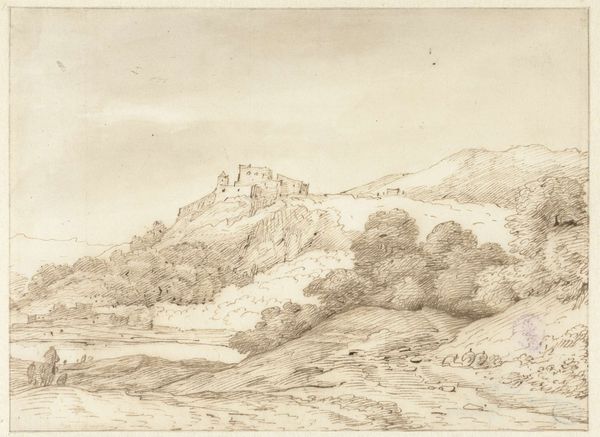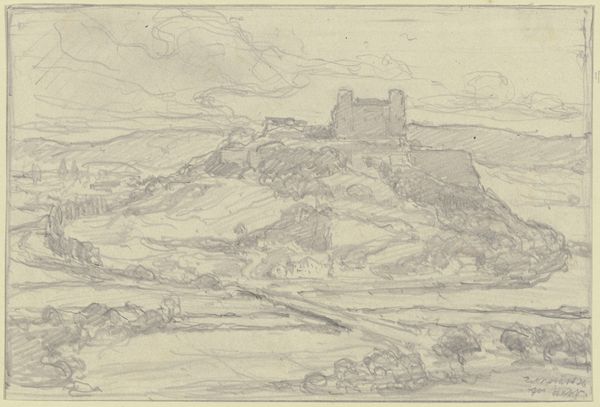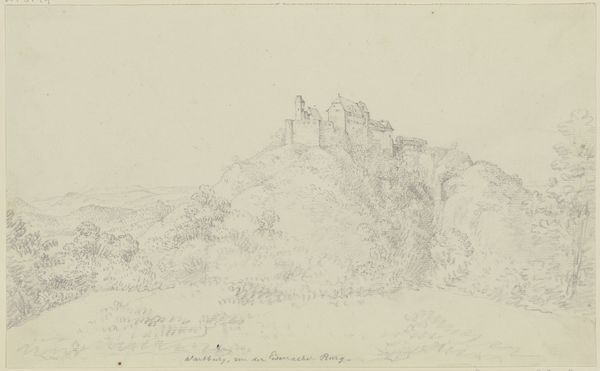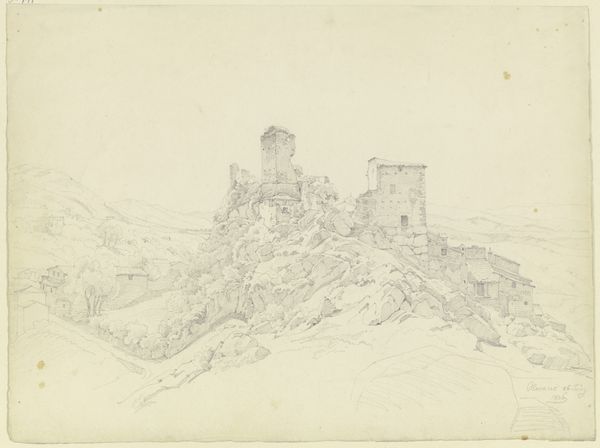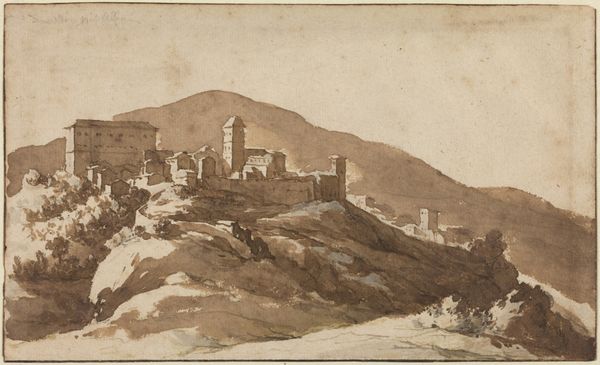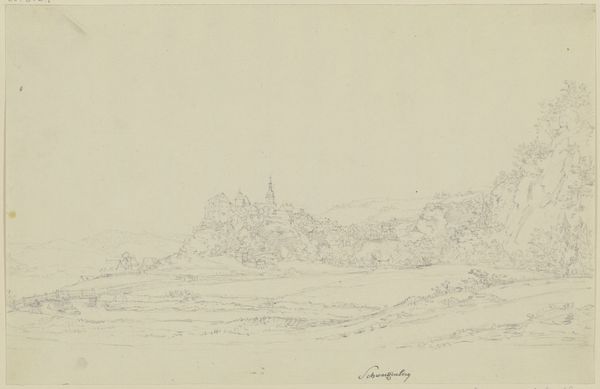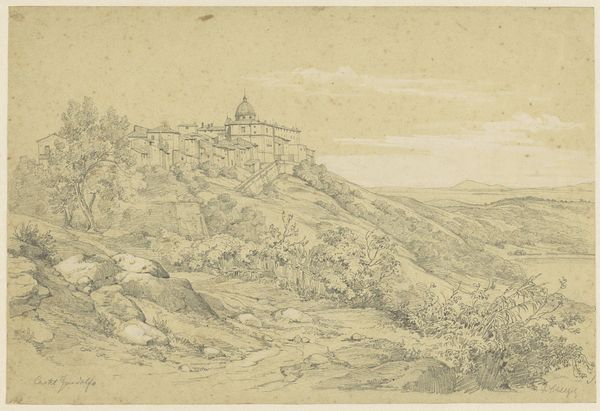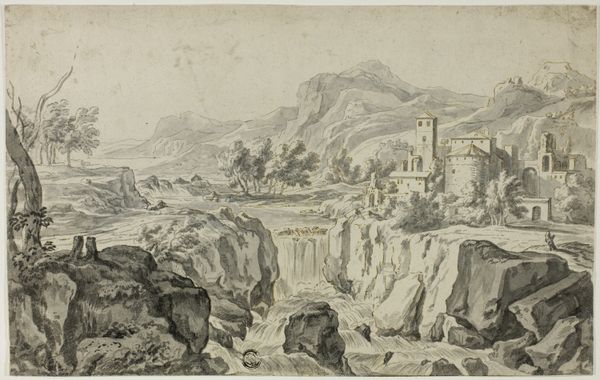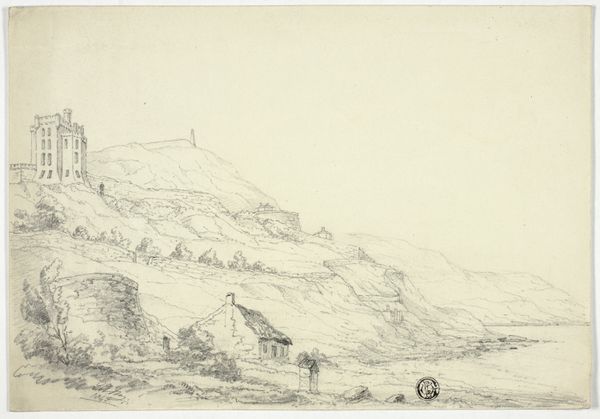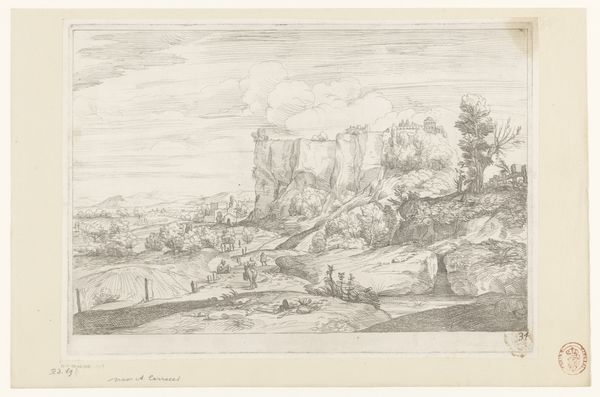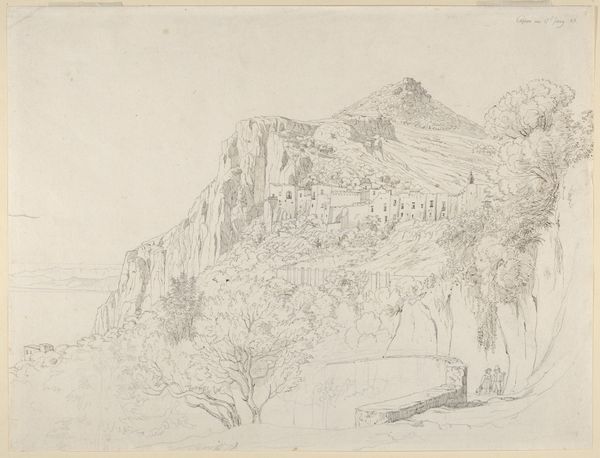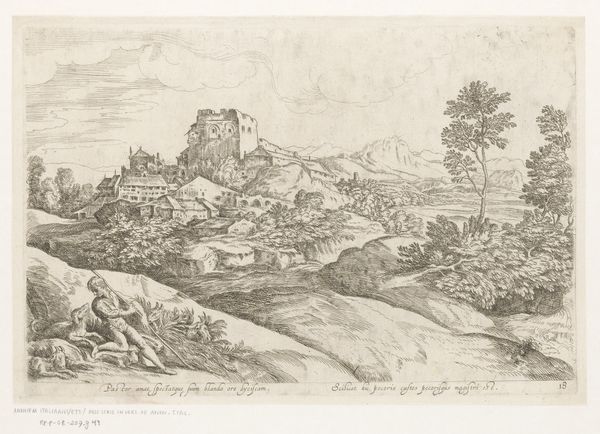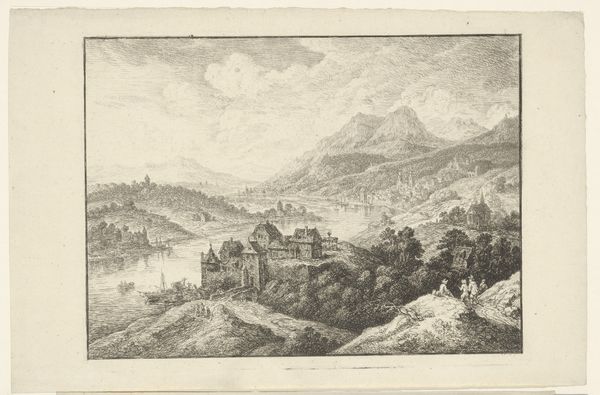
drawing, pencil
#
drawing
#
landscape
#
romanticism
#
pencil
Dimensions: 234 mm (height) x 356 mm (width) (bladmaal)
Editor: So, here we have J.L. Lund's "Olevano Romano. Sabinerbjergene," a pencil drawing likely created between 1801 and 1819. There's a quiet, almost ghostly quality to it, I think, because of the medium and lack of color. How would you describe this landscape through a formal analysis? Curator: Indeed, its tonal subtlety is striking. Notice the artist's mastery of line – how delicate hatching defines volume and texture, creating spatial depth. The composition employs a clear foreground, middle ground, and background. Can you see how Lund orchestrates this recession to guide the viewer's eye? Editor: Yes, the eye definitely moves back through the landscape, almost in distinct layers. Is the contrast between light and shadow important to how it's read? Curator: Precisely. Observe how light delicately models the forms, lending a tactile quality to the architectural and natural elements. Consider the structural interplay of horizontal and vertical lines; the stability of the land contrasting with the upright structures. These relationships generate visual interest and contribute to the work's overall formal balance. Do you agree? Editor: Yes, the strong verticals of the buildings against the rolling horizontals do create balance. Is it also important to read the materiality of the pencil strokes in and of themselves? Curator: Absolutely. The variable pressure of the pencil reveals not just the landscape, but the hand of the artist himself. This adds a layer of meaning; the drawing isn't simply representational, but an index of its own making. Editor: That makes perfect sense. I was so focused on the landscape that I hadn't considered the active choices being made in mark-making. Thanks for highlighting those formal elements. Curator: My pleasure. By examining its intrinsic qualities, we enrich our understanding of the work’s aesthetic impact.
Comments
No comments
Be the first to comment and join the conversation on the ultimate creative platform.
